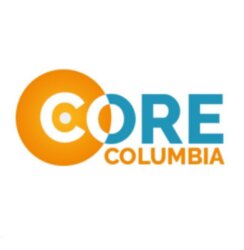With the start of Covered California’s open-enrollment period just a few weeks away, the exchange announced that the renewal process for a record number of enrollees is now underway — with more than 1.5 million Californians eligible to renew their coverage. In addition, the preliminary rate change that Covered California previously announced in August has been revised downward to a new all-time low of 0.5 percent for the 2021 plan year.
“Covered California heads into the upcoming open-enrollment period with more consumers than ever, and we will be doing so with the lowest rate change in our history,” said Peter V. Lee, executive director of Covered California. “California has built on and strengthened the Affordable Care Act, and right now this means that Californians facing a pandemic and recession are finding the security of having access to quality, affordable health care coverage.”
The latest data shows that Covered California had a record 1.5 million enrollees in June of 2020. When compared to historical data, Covered California’s highest enrollment total in October, which is when the renewal process begins, was 1.3 million in 2018. Current enrollees can begin renewing their coverage now, and they have until Dec. 15 to finalize their 2021 plan choice. People who do not actively select a plan for 2021, will be renewed in their current plan, so they do not suffer a gap in coverage.
“During a pandemic and recession, it is no surprise that Covered California is seeing record enrollment, because we are a safety net to help people get quality health care coverage,” Lee said.
New Record-Low Rate Change
Covered California also announced that after the reviews by the California Department of Managed Health Care and the California Department of Insurance, the statewide weighted average rate change was revised downward from 0.6 percent to a new record-low of 0.5 percent.
The lower rate change is the result of reduced rates for Health Net’s EPO and PPO products, which are subject to review the California Department of Insurance, in Contra Costa, El Dorado, Los Angeles, Marin, Mariposa, Merced, Monterey, Napa, Orange, Placer, Riverside, Sacramento, San Benito, San Bernardino, San Diego, San Francisco, San Joaquin, San Mateo, Santa Cruz, Solano, Sonoma, Stanislaus, Tulare and Yolo counties (see Table 1: California Individual Market Rate Changes for 2021 by Rating Region).
Consumers both on and off the exchange benefit from Covered California’s competitive marketplace, which allows them to shop for the best value and benefit from lower increases. In addition, many consumers can save more by shopping and switching to a lower-cost health plan. With the reduction in the statewide average rate change, the average rate change for unsubsidized consumers who shop and switch to the lowest-cost plan in the same metal tier is now -7.4 percent, which means many Californians can get a lower gross premium if they shop and switch. The average rate change varies by region and by an individual’s personal situation.
Nearly nine out of every 10 consumers who enroll through Covered California receive financial help — in the form of federal tax credits, state subsidies, or both — which help make health care more affordable. California’s state-specific enhanced subsidies, which were introduced for the first time in 2020, are benefiting about 590,000 enrollees in Covered California and are available again for both new and renewing members in 2021.
“The bold policy choices made in California to build on and strengthen the Affordable Care Act have led to a very competitive market that is full of choice for consumers,” Lee said. “Covered California continues to provide stability and lower costs in the face of national uncertainty in health care.”
In 2021, all 11 carriers will continue offering products across the state, and two companies will expand their coverage areas, providing increased competition and consumer choice. Nearly all Californians (99.8 percent) will have two or more choices and over three-quarter of Californians (77 percent) will have four or more choices.
Open enrollment for the upcoming year will begin Nov. 1, 2020, and run through Jan. 31. Open enrollment is the one time of the year where eligible consumers cannot be turned away from coverage for any reason. Covered California will be launching a new ad campaign on Nov. 9 and has budgeted $157 million for marketing, sales and outreach during the current fiscal year — an increase of more than $30 million from last year.
In addition, consumers who need coverage earlier may be eligible for the special-enrollment period that is currently underway. Consumers who experience a qualifying life event, such as: losing their health care coverage, losing their job, suffering a loss of income, moving or being a wildfire victim, could be eligible to sign up for coverage that begins in November or December.



